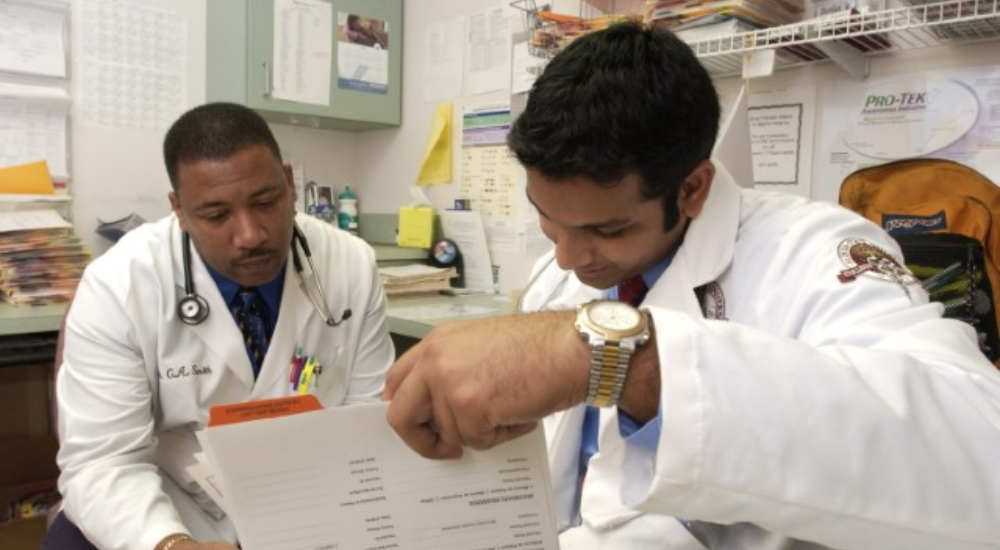As a fourth-year medical student in the United States, you’ve likely heard the term “sub-internship” or “acting internship” thrown around. But what exactly is a sub-internship, and why is it a crucial part of your medical education journey? In this blog post, we’re going to dive deep into the world of sub-internships and explore what makes them an essential stepping stone in your path to becoming a physician. So let’s get started!
What Is a Sub-Internship?
A sub-internship, also known as an acting internship, is a clinical rotation designed for fourth-year medical students in the United States. It provides an opportunity for students to gain hands-on experience in a hospital setting, mirroring the responsibilities and roles of a first-year resident. These rotations are typically conducted in the student’s home hospital but can also be undertaken at a different hospital than the one affiliated with their medical school.
Why Are Sub-Internships Important?
Sub-internships play a pivotal role in a medical student’s education for several reasons:
1. Clinical Experience: Bridging the Gap Between Theory and Practice
Sub-internships provide a unique opportunity for medical students to translate their extensive classroom knowledge into practical skills. Working closely with patients and healthcare teams, students get to witness the real-life application of their education. This invaluable experience serves as a bridge, connecting the theoretical foundation of medical school with the dynamic world of patient care.

2. Residency Preparation: A Glimpse into Your Future
Sub-internships offer a sneak peek into the life of a first-year resident. It’s like a trial run for the rigorous demands of residency, allowing students to become more comfortable with the responsibilities they’ll encounter in their future careers. From making clinical decisions to managing patient care, this experience is a pivotal step in preparing students for the transition to residency.
3. Career Exploration: Unveiling Your Path
One of the remarkable aspects of sub-internships is the exposure they provide to different medical specialties and subspecialties. This rotation allows students to dip their toes into various realms of medicine, helping them confirm their career interests or even discover entirely new passions. It’s a chance to explore and align your career trajectory with your true calling.
4. Letters of Recommendation: A Professional Endorsement
A successful sub-internship can yield more than just knowledge and experience. It can also lead to glowing letters of recommendation from attending physicians. These letters are priceless assets when applying for residency programs. They vouch for your clinical competence and professionalism, opening doors to competitive programs and specialties.
5. Networking: Building a Strong Support System
During your sub-internship, you’ll be rubbing shoulders with residents and attending physicians who have a wealth of experience and knowledge to share. This is an opportunity to connect, seek guidance, and establish a professional network that can serve as a valuable resource as you progress in your medical career. These connections can lead to mentorship, collaboration, and lasting professional relationships.

What is the Difference Between an Intern and a Sub-Intern?
The distinction between an intern and a sub-intern is essential within the context of medical education. An intern, often referred to as a first-year resident, is a medical graduate who has completed medical school and is in the initial year of their postgraduate clinical training. During their internship, they rotate through various medical specialties, accruing a broad clinical experience. Interns have already obtained their medical degree (MD or DO) and passed the necessary licensing exams.
Conversely, a sub-intern, or acting intern, is a medical student in their final year of medical school who assumes roles and responsibilities similar to those of an intern. Sub-internships provide medical students with a preview of the responsibilities and decision-making involved in being a first-year resident, albeit under supervision.
Importantly, sub-interns are still in medical school, yet they engage in more advanced clinical duties to prepare for their future internships. In essence, the key distinction lies in their level of training and education, with interns being postgraduate professionals and sub-interns being medical students in their last year of training.
How to Be a Good Sub-Intern?
Becoming a successful sub-intern in a medical setting requires a combination of key skills and a proactive approach to your clinical experience. One of the most crucial aspects is the ability to learn quickly. Attendees and residents understand that there may be a learning curve, and they expect some initial fumbling during their first days in the role. However, it’s essential to demonstrate a rapid adaptation to the clinical environment and to minimize repetitive mistakes. Consistently making the same errors can lead to lower ratings and hinder your progress.
Additionally, time management becomes paramount as a sub-intern. Unlike the relatively flexible schedule of a medical student, sub-interns must efficiently prioritize their time. The luxury of unlimited hours for independent study is no longer available. Clinical responsibilities demand dedicated attention, and you need to find the right balance between patient care, learning, and self-study. This often involves making quick, informed decisions and maximizing your clinical exposure.
To excel as a sub-intern, communication skills, teamwork, and professionalism are equally important. Working effectively with the healthcare team, including attendings, residents, nurses, and support staff, is essential. Demonstrating a positive and cooperative attitude, as well as a willingness to learn from more experienced colleagues, can help you make a lasting impression during your sub-internship.
What to Expect During a Sub-Internship?
During your sub-internship, you’ll work alongside the medical team, taking on patient care responsibilities, participating in rounds, and performing tasks such as writing progress notes, ordering tests, and assisting with procedures. You’ll be expected to demonstrate your clinical skills, knowledge, and professionalism.
Keep in mind that sub-internships can be challenging and demanding. Long hours and the responsibility of making clinical decisions can be overwhelming at times, but they are essential for your growth and development as a future physician.
Tips for a Successful Sub-Internship
Here are some tips to make the most of your sub-internship experience:
- Be Proactive: Take the initiative to learn, ask questions, and actively engage with the medical team.
- Stay Organized: Juggling patient care responsibilities can be hectic, so staying organized is crucial.
- Seek Feedback: Don’t be afraid to ask for feedback from your attending physicians and residents. It’s how you’ll improve.
- Take Care of Yourself: Balancing the demands of a sub-internship with self-care is crucial. Ensure you get enough rest and maintain a healthy work-life balance.
Conclusion
A sub-internship is a pivotal phase in your medical education journey. It’s an opportunity to gain real-world clinical experience, prepare for your residency, and explore your career interests. While it may be challenging, the skills and knowledge you gain during your sub-internship will be invaluable as you work toward becoming a compassionate and competent physician. Embrace this phase of your education with an open mind and a thirst for learning, and you’ll be well on your way to a successful medical career.